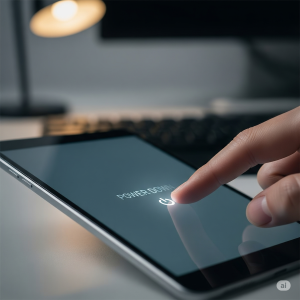The Blue Tick Debate: LinkedIn's Verification Badge – Security vs. Authenticity
That little blue tick with the white checkmark – it’s become a familiar symbol across social media, signifying a verified account. About a year ago LinkedIn joined the ranks, offering individuals the option to verify their identity. But what exactly does this verification badge entail? Why does it exist? And more importantly, are the potential benefits worth the personal information you need to provide?
LinkedIn's identity verification is designed to add a layer of trust and authenticity to the platform. In an online world increasingly susceptible to fake profiles and impersonation, the goal is to assure other professionals that the person they're connecting with is who they say they are.
Why the Verification Badge Exists:
• Combating Fake Profiles: LinkedIn is a professional networking platform where reputation and connections matter. Fake profiles can be used for various malicious purposes, from spreading misinformation and scams to conducting fraudulent business activities. The verification badge aims to make it harder for such profiles to thrive.
• Building Trust and Credibility: For recruiters, potential clients, and business partners, seeing a verified badge next to someone's name can provide a greater sense of confidence in their identity. This can be particularly important for freelancers, consultants, and those building their personal brand online.
• Enhancing Platform Integrity: By encouraging verification, LinkedIn hopes to foster a more trustworthy and reliable environment for all users. This can lead to more meaningful interactions and a stronger sense of community.
The Pros of LinkedIn's Verification Badge:
• Increased Trust and Credibility: As mentioned, a verified badge can signal to others that you are a legitimate professional, potentially leading to more connection requests and opportunities.
• Enhanced Profile Visibility: While not explicitly stated by LinkedIn, it's plausible that verified profiles might receive a slight boost in search results or be perceived more favorably by the platform's algorithms over time.
• A Stronger Network: By verifying your identity, you contribute to a more authentic and reliable network, benefiting everyone on the platform.
• Protection Against Impersonation: If someone were to create a fake profile using your name and likeness, having a verified badge on your legitimate account could help distinguish you.
The Cons and My Decision Not to Verify (Yet):
While the benefits of verification seem appealing, there are also valid concerns, particularly around the personal information required. To obtain the LinkedIn verification badge for individuals, the current process involves using a third-party verification service (like Persona) and submitting a copy of a government-issued ID such as your passport .
This is where my reservations come in. While I understand the intent behind verifying identity, I personally choose not to verify my LinkedIn profile at this time due to security concerns surrounding providing my passport details to a third-party service via LinkedIn.
Here's why this gives me pause:
• Data Security Risks: Sharing a highly sensitive document like a passport online, even through a seemingly reputable third-party, introduces potential risks. Data breaches can happen, and the thought of my passport information being compromised is a significant worry.
• Privacy Implications: I am cautious about the amount of personal information I share online and with whom. While LinkedIn outlines its data handling practices, entrusting a third-party with my passport details feels like an additional layer of potential privacy vulnerability.
• Necessity vs. Risk: While a verification badge might offer some benefits, I currently believe that the potential risks associated with providing my passport outweigh these advantages for my personal use of the platform. I have built a strong professional network and established my credibility through my experience and interactions on LinkedIn without the badge.
The Bottom Line:
LinkedIn's verification badge for individuals is a step towards a more trustworthy online professional environment. It offers potential benefits in terms of credibility and network integrity. However, the decision to verify is a personal one that should involve weighing these benefits against individual security and privacy concerns.
For me, the current requirement of submitting passport details raises enough red flags that I am choosing to forgo the verification badge for now. I hope that LinkedIn will consider alternative, less sensitive verification methods in the future to encourage broader adoption while addressing legitimate security concerns.


